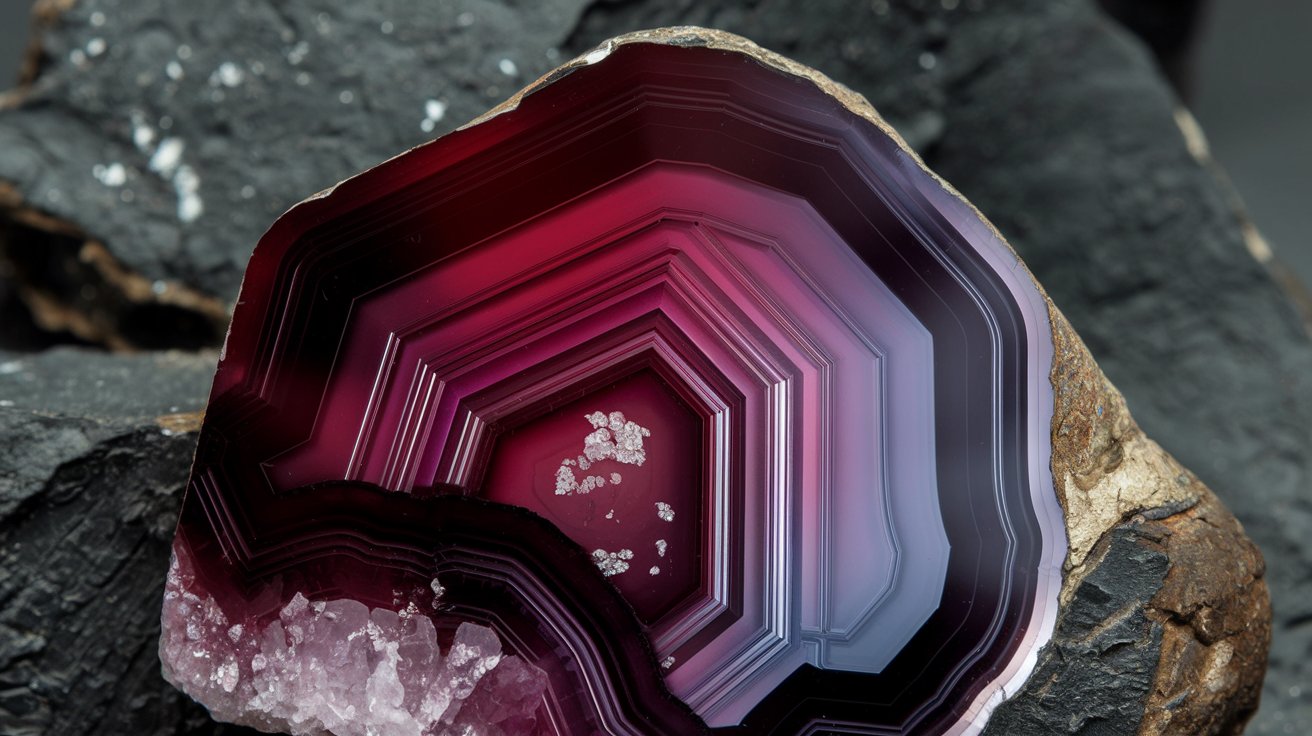
Have you ever heard of Alstonite? This rare mineral, also known as bromlite, is a double carbonate composed of calcium and barium. Its unique properties and complex crystal structure make it a subject of fascination for scientists and mineral enthusiasts alike. Alstonite typically appears colorless to snow-white, but can also show pale shades of gray, cream, pink, or rose-red. Formed through low-temperature hydrothermal processes, it is found in various locations worldwide, including Australia, Austria, Brazil, and Canada. With a hardness of 4 to 4.5 on the Mohs scale and weak yellow fluorescence under UV light, alstonite is truly a mineral worth exploring.
Key Takeaways:
- Alstonite, a rare double carbonate mineral, has a unique crystal structure and optical properties. Its formation through low-temperature hydrothermal processes and association with other minerals make it a fascinating subject for scientific study.
- Alstonite's complex crystal structure and behavior under high pressure have captured the interest of scientists. Its solubility in dilute hydrochloric acid and lack of radioactive properties make it an intriguing mineral for environmental and health studies.
What is Alstonite?
Alstonite, also known as bromlite, is a rare double carbonate mineral. Its unique properties and complex crystal structure make it a fascinating subject for mineral enthusiasts and scientists alike. Let's dive into some intriguing facts about this mineral.
-
Chemical Composition
Alstonite's chemical formula is BaCa(CO3)2, meaning it contains barium, calcium, and carbonate ions. -
Appearance
Typically colorless to snow-white, alstonite can also appear pale gray, cream, pink, or pale rose-red. Its color may fade when exposed to light. -
Crystal System
Alstonite belongs to the triclinic crystal system, which sets it apart from its polymorph paralstonite, which is trigonal. -
Crystal Structure
The structure involves layers of barium and calcium ions stacked in a specific arrangement, with carbonate groups located between these layers. -
Lattice Parameters
Its lattice parameters are a = 17.38 Å, b = 14.40 Å, c = 6.123 Å, α = 90.35°, β = 90.12°, and γ = 120.08°, with the unit cell containing 24 formula units.
Optical and Physical Properties
Alstonite's optical and physical properties make it a unique mineral. Here are some key aspects:
-
Optical Properties
Alstonite is biaxial with refractive indices nα = 1.526, nβ = 1.671, and nγ = 1.672. It exhibits weak birefringence and has an optic angle of about 6°. -
Fluorescence
Under ultraviolet light, alstonite shows weak yellow fluorescence, both in shortwave and longwave UV light. -
Solubility
This mineral is soluble in dilute hydrochloric acid, which can affect its physical properties over time. -
Hardness
With a hardness of 4 to 4.5 on the Mohs scale, alstonite is moderately hard. -
Specific Gravity
Its specific gravity is around 3.70, slightly above the average density of most minerals.
Cleavage, Fracture, and Twinning
Alstonite's cleavage, fracture, and twinning characteristics contribute to its unique crystal forms.
-
Cleavage
Alstonite exhibits imperfect cleavage on pseudo-orthorhombic {110} planes, meaning it doesn't cleave easily along these planes. -
Fracture
The fracture of alstonite is uneven, indicating it doesn't break cleanly along any particular plane. -
Twinning
Commonly exhibits twinning, especially on pseudo-orthorhombic {110} and {310} planes, resulting in complex crystal forms.
Formation and Occurrence
Understanding how and where alstonite forms can provide insights into its rarity and unique properties.
-
Formation
Alstonite forms through low-temperature hydrothermal processes, where mineral-rich hot water flows through rocks and deposits minerals as it cools. -
Occurrence
Found in association with minerals like calcite, barite, and witherite, alstonite is relatively rare. -
Localities
Notable localities include Australia, Austria, Brazil, Canada, China, Finland, France, Greenland, India, and Italy.
Historical and Structural Significance
Alstonite has a rich history and a complex structure that has intrigued scientists for years.
-
Historical Significance
First identified in the mid-19th century, its crystal structure remained unknown until recent studies provided detailed information. -
Crystal Habit
Alstonite crystals typically exhibit a steep pseudohexagonal dipyramidal habit, similar to witherite but more acute. -
Structural Differences
One main difference between alstonite and paralstonite is the arrangement of cation layers. Alstonite has an ABAB conformation, while paralstonite alternates Ca and Ba atoms along the c-axis.
High-Pressure Studies and Environmental Impact
Recent studies have explored how alstonite behaves under high pressure and its environmental impact.
-
High-Pressure Studies
High-pressure studies using angle-dispersive powder XRD have provided insights into structural changes under different pressure conditions. -
Pressure-Induced Changes
Experiments revealed significant structural changes under pressure, with diffraction patterns showing distinct changes in lattice parameters. -
Atomic Interaction
High-pressure experiments allowed for the analysis of atomic interactions, providing valuable information about alstonite's behavior under extreme conditions. -
Environmental Impact
Alstonite is not radioactive and poses no known health risks. However, its solubility in dilute HCl indicates it can be affected by acidic environments.
Scientific Interest
Alstonite continues to captivate scientists and mineral enthusiasts due to its unique properties and complex structure.
-
Scientific Interest
Its complex crystal structure and unique optical properties make alstonite a valuable subject for mineralogical research. -
Conclusion
Alstonite remains a fascinating mineral, offering a wealth of information for those interested in mineralogy and crystallography. Its unique properties and complex structure make it an important subject for ongoing scientific study.
Alstonite: A Rare Gem in Mineralogy
Alstonite, also known as bromlite, stands out due to its unique chemical composition and complex crystal structure. This rare double carbonate mineral, composed of barium and calcium, exhibits a range of colors from colorless to pale rose-red. Its triclinic crystal system and biaxial optical properties make it a fascinating subject for scientific study. Found in various locations worldwide, including Australia, Austria, Brazil, and Canada, alstonite forms through low-temperature hydrothermal processes. Its moderate hardness, specific gravity, and weak fluorescence under UV light add to its distinct characteristics. High-pressure studies have revealed significant structural changes, providing insights into atomic interactions. While not radioactive, alstonite's solubility in dilute hydrochloric acid suggests it can be affected by acidic environments. Overall, alstonite's rarity and intriguing properties make it a valuable mineral for ongoing research and mineralogical exploration.
Frequently Asked Questions
Was this page helpful?
Our commitment to delivering trustworthy and engaging content is at the heart of what we do. Each fact on our site is contributed by real users like you, bringing a wealth of diverse insights and information. To ensure the highest standards of accuracy and reliability, our dedicated editors meticulously review each submission. This process guarantees that the facts we share are not only fascinating but also credible. Trust in our commitment to quality and authenticity as you explore and learn with us.


